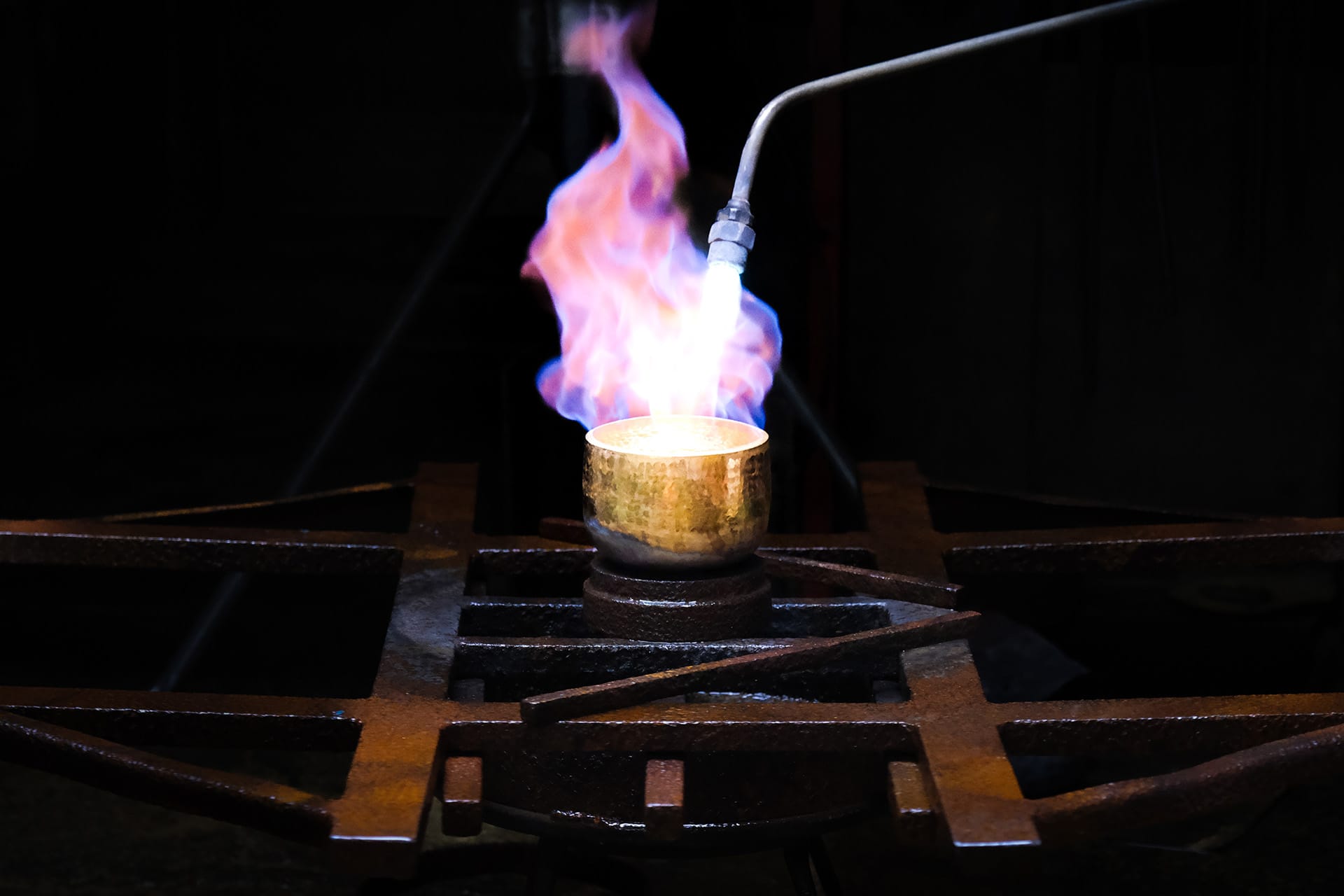
A Tale Of Two Orin - Part 1
It's November 2023 and I’m in Takaoka, Toyama prefecture. There’s a sleepy atmosphere despite it being a Monday. The city is famous across Japan for its copperware and decorative lacquerware. It’s raining and I’m here to visit the workshop of Shimatani Yoshinori, a 4th-generation ‘orin’ craftsman owner of the Shimatani Shoryu Studio.
A rin (りん)or orin (おりん) is a type of bell, sometimes called a ‘singing bowl’, used in Buddhist ritual that originated in China and further developed in Japan. Orin are also a fixture of the ‘Butsudan’, a small shrine found in many Japanese homes to commemorate deceased family members. Orin can be as small as a few centimetres to about a metre in diameter and they are played by hitting them softly with a mallet. When you do so, you not only hear it ring but also feel it vibrate, especially with bigger ones. When you’re with other people it’s as if you’re all resonating at the same frequency.
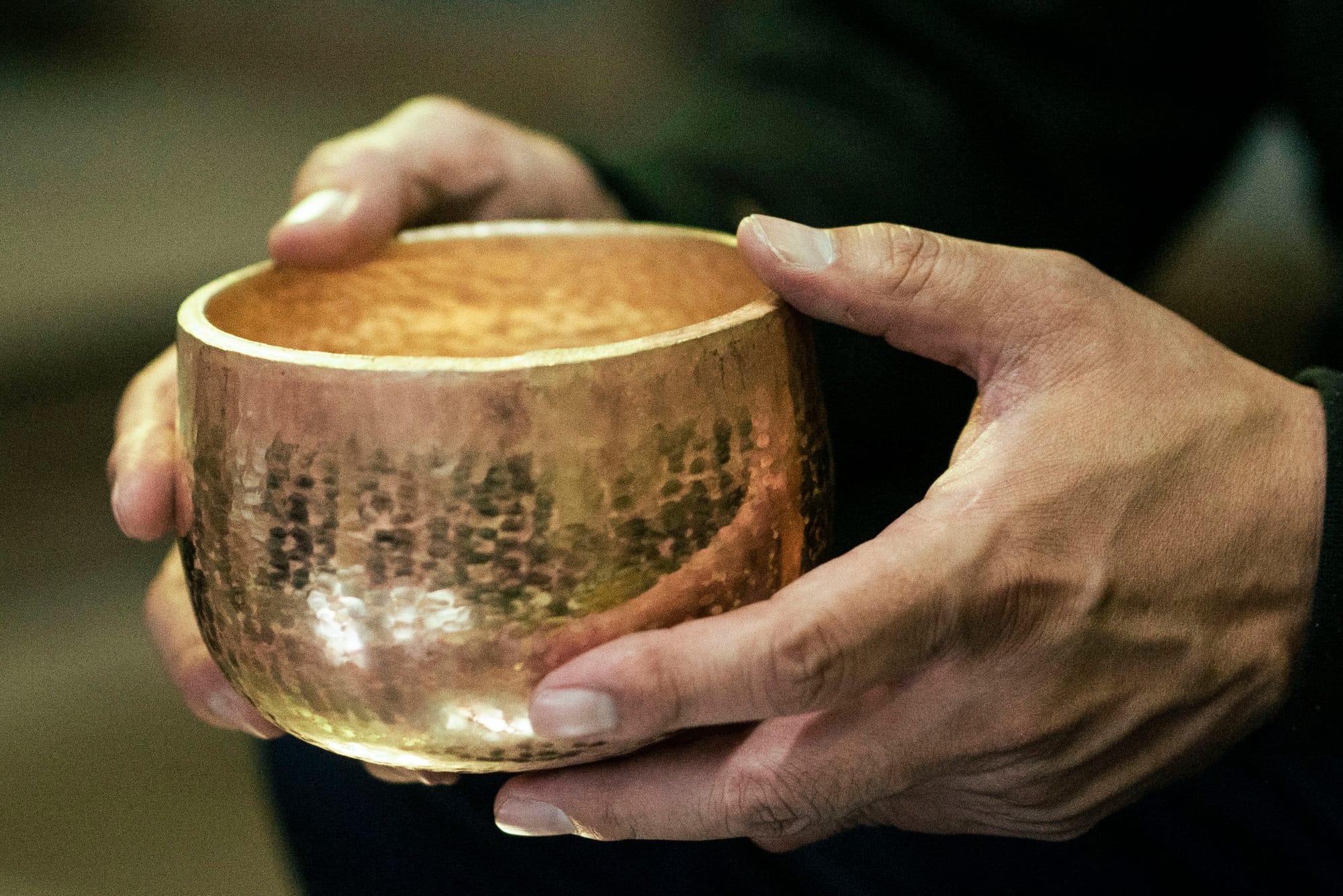
I’m accompanied by Takano Kyoko from Mizu to Takumi, an organisation devoted to the promotion of the Toyama area through its many wonders, especially those related to craft. Kyoko acts as my interpreter during a visit that’s motivated by my research into ‘shokunin’ - craftspeople - culture.
The workshop is similar to many others I’ve visited. Small and crammed with objects in a fine equilibrium, accompanied by the constant hammering of two apprentices. Shimatani has been making orin for twenty three years but he was hesitant to follow in the family footsteps. “I didn’t think it was a smart thing to do after seeing my father and grandfather go through the daily grind of the job” he tells me. He changed his mind while working at a restaurant as a university student. There he learned to cook and realised that making customers happy through his service was something he wanted to do.
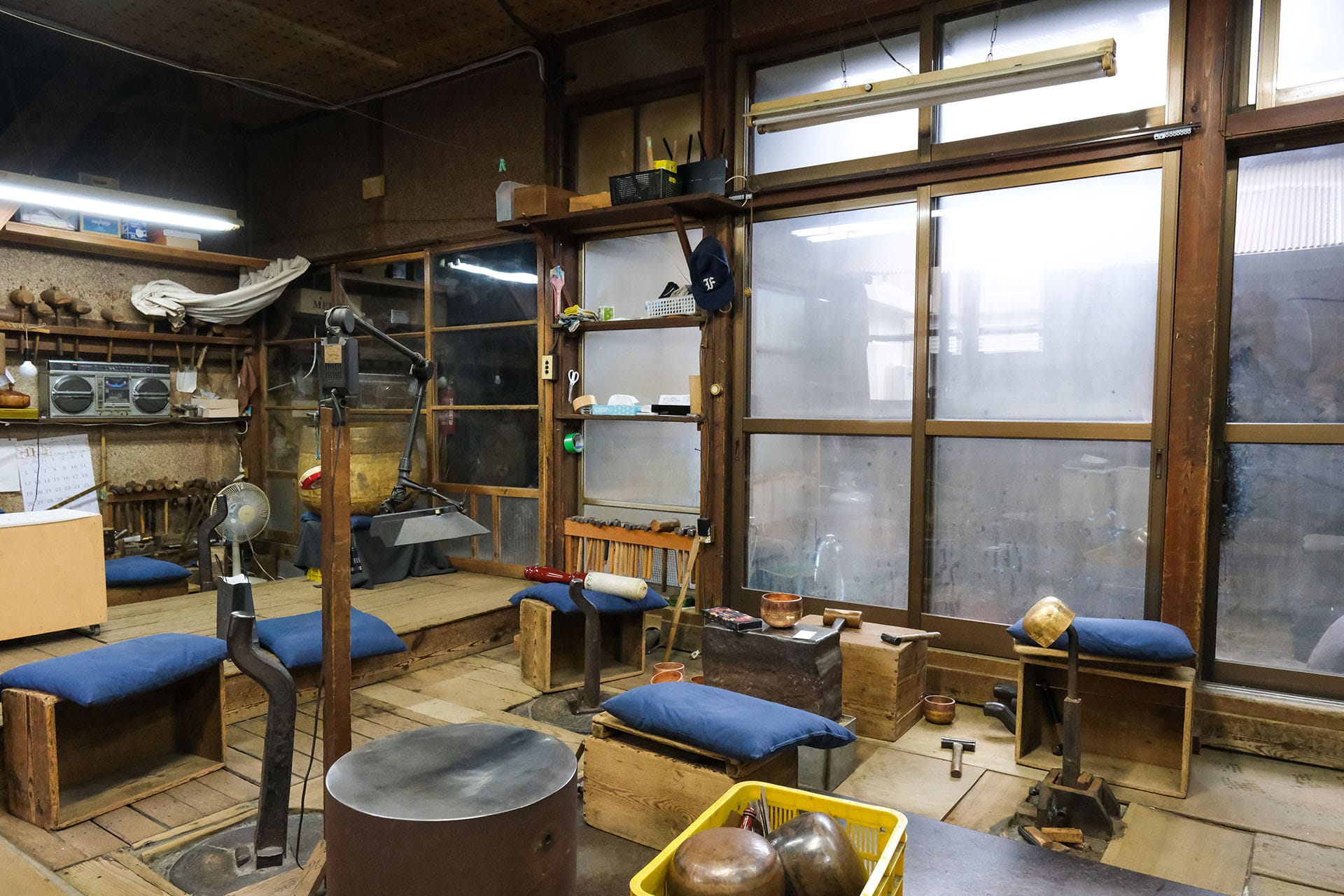
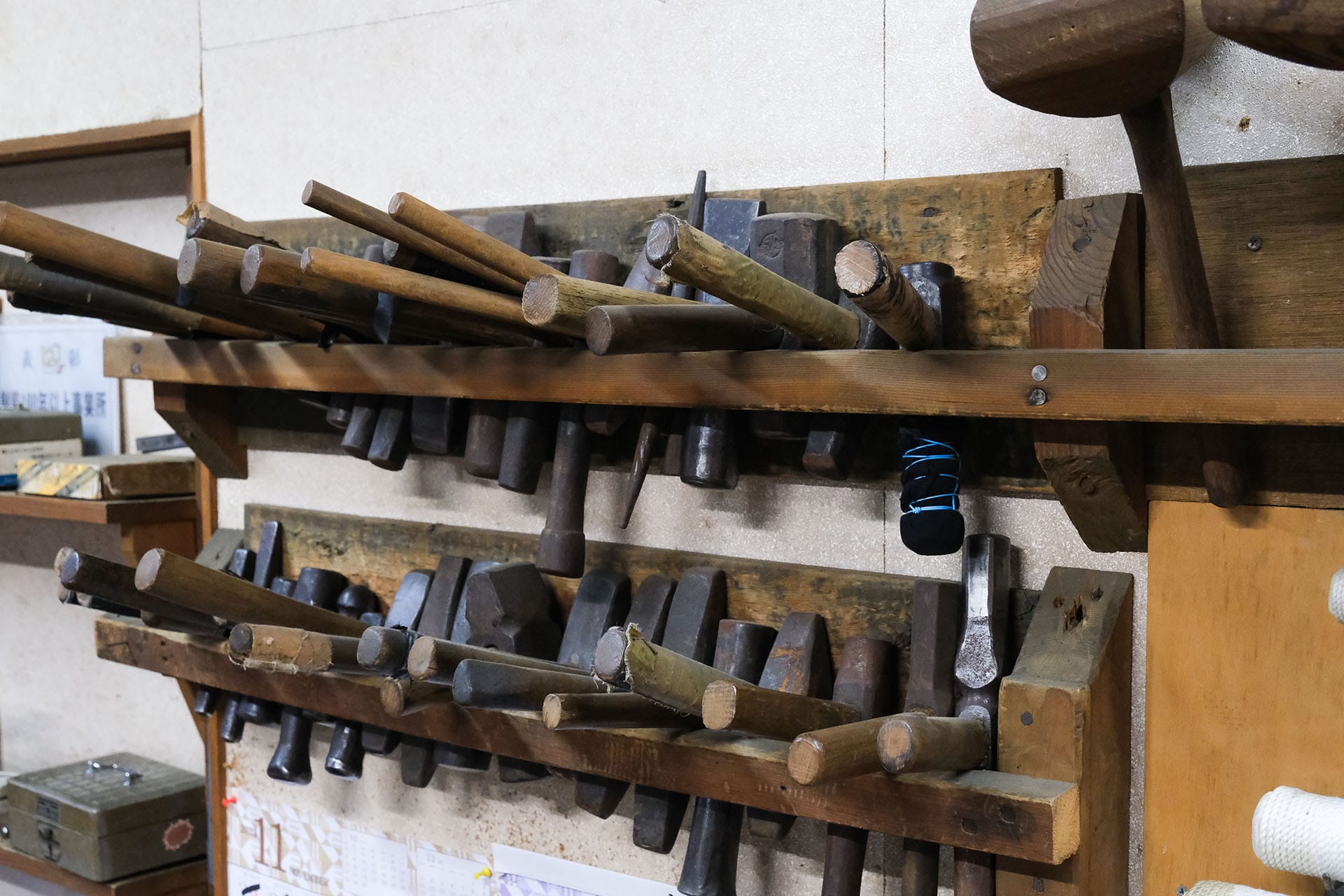
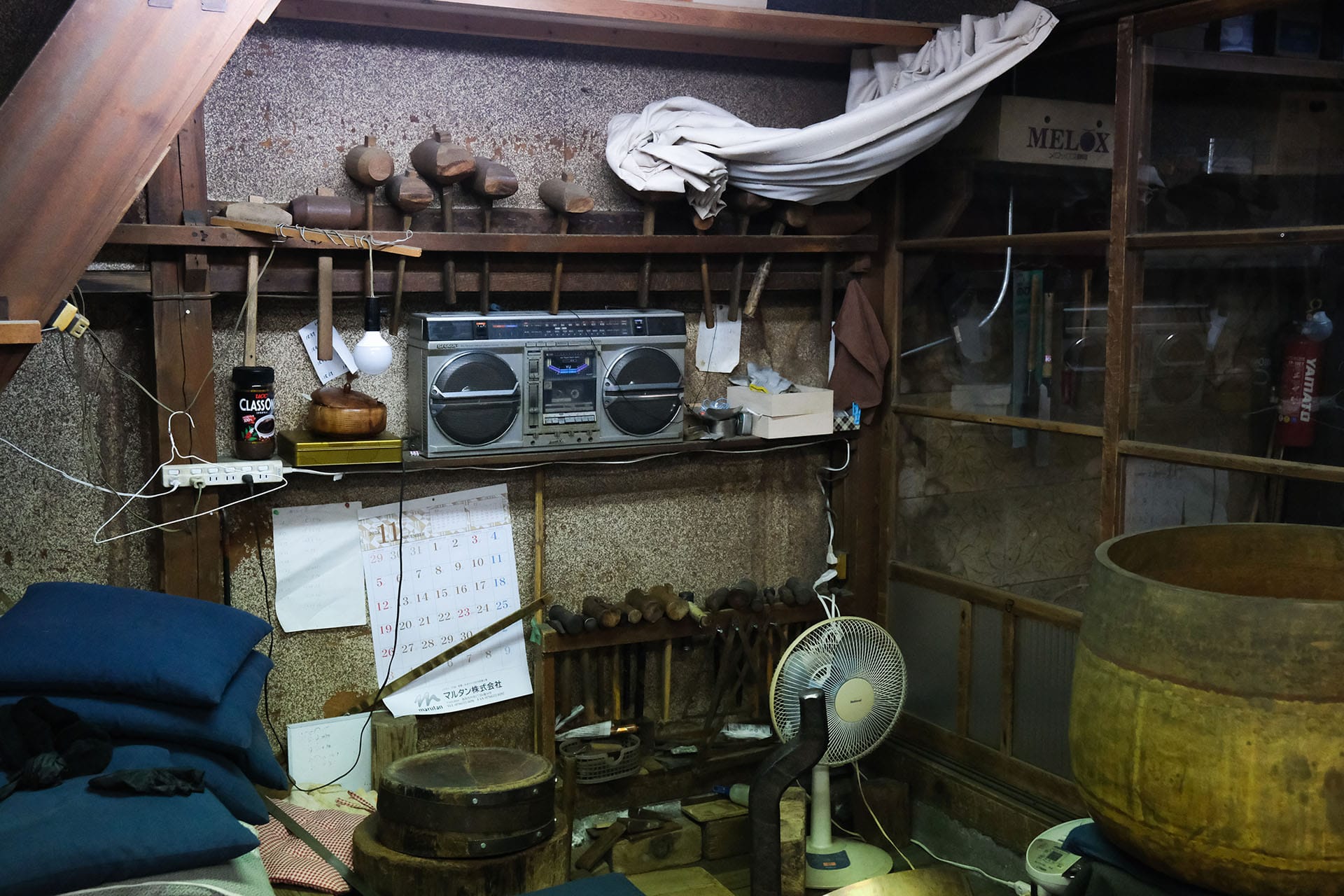
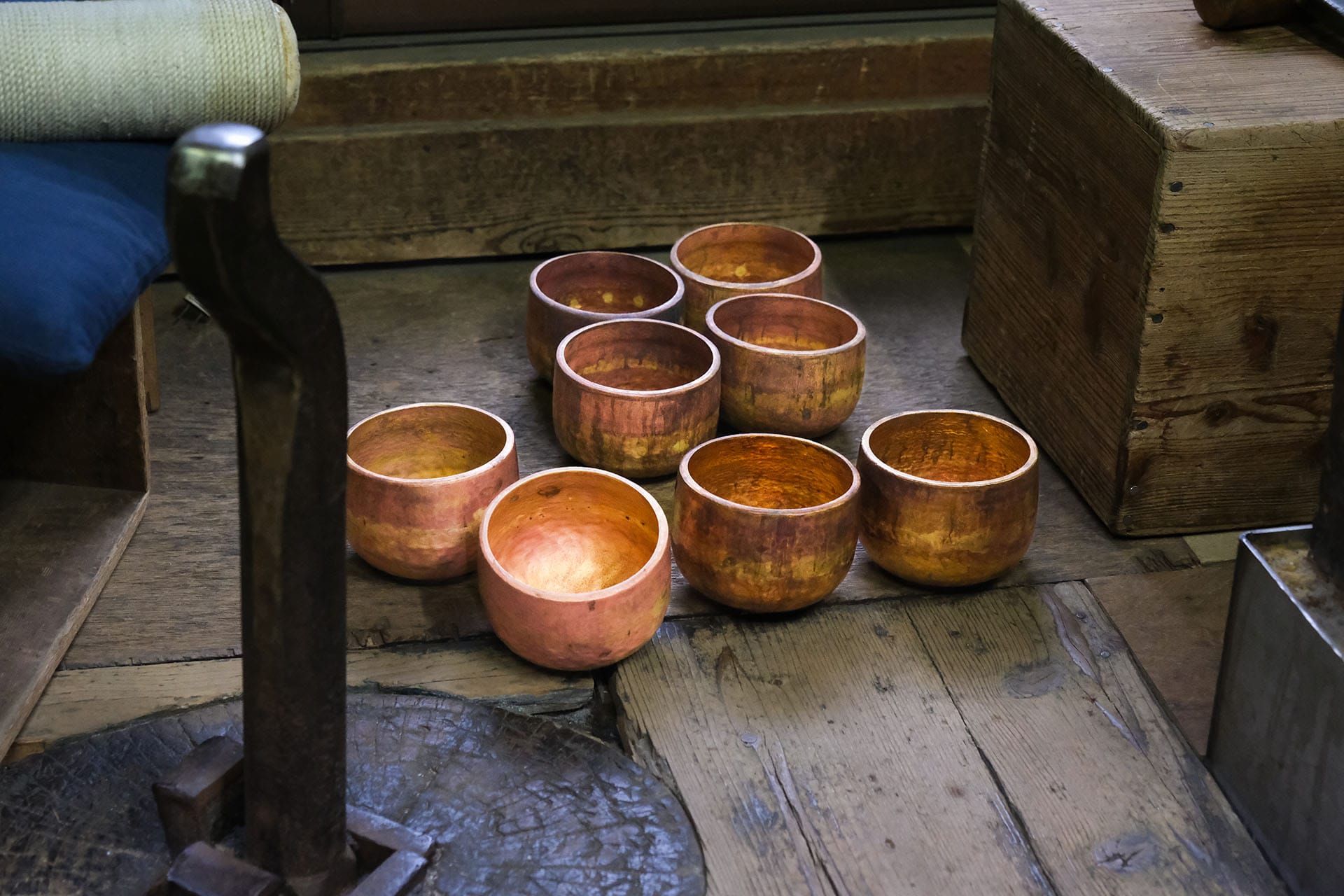
Details from the workshop
His training was classic shokunin: Shimatani’s father and grandfather didn’t offer precise instructions. He had to “watch, listen and learn” from their toiling away. Looking closely was followed by trying out, noticing new details and repeating the process over and over again. When his father shows up during the interview I ask him about his teaching method to which he simply replies “look, try, repeat”.
It took Shimatani about twelve years to be satisfied with the quality of his work. In the years before that, his father and grandfather would adjust Shimatani’s bells. Orin are made of three brass segments. Only the upper part is thick, very important for obtaining the right sound. The middle and the bottom are very thin. They haven’t changed much since his grandfather’s time except that back then metal was a precious resource and manpower was cheap, the opposite of today.
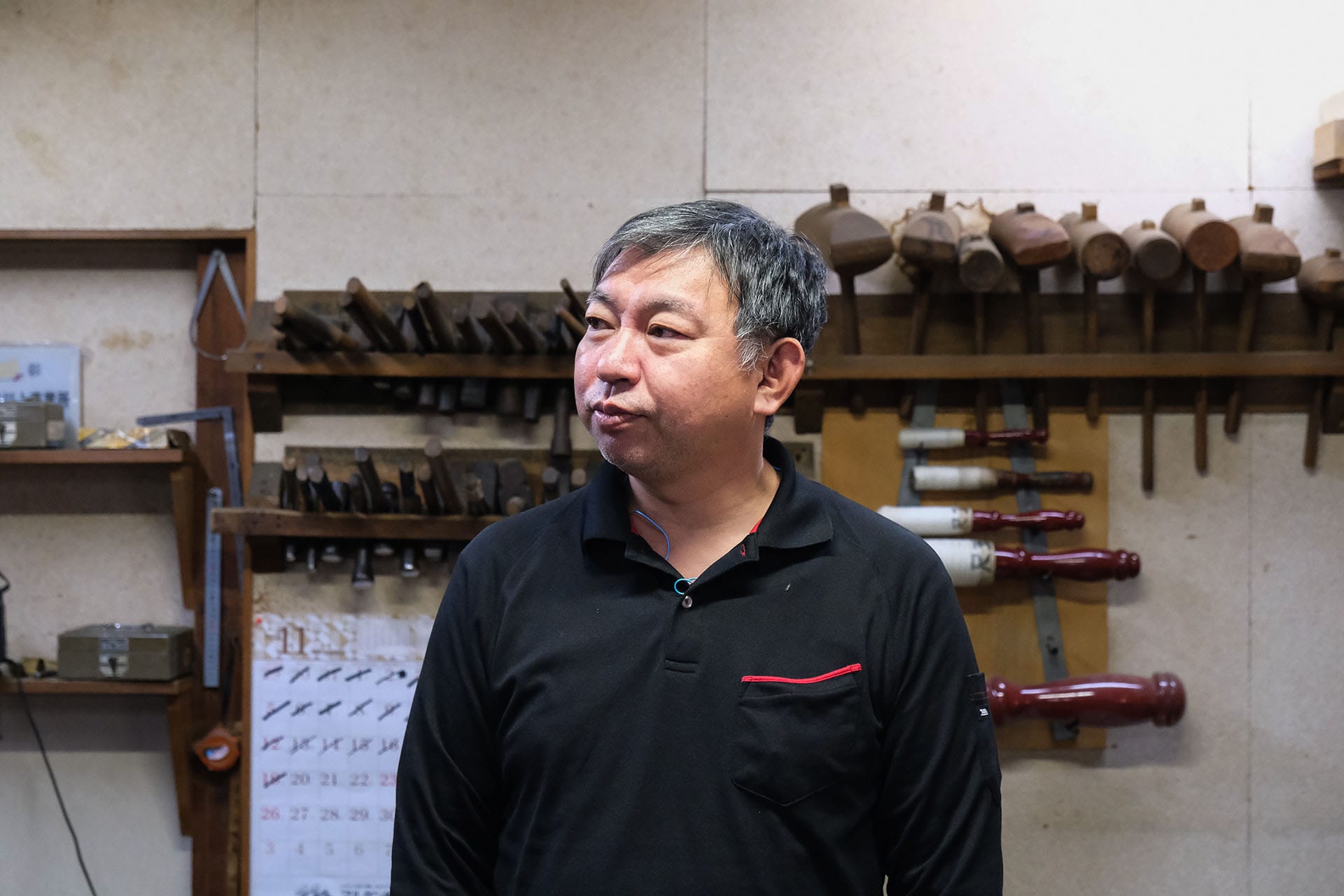
The metal is made wider through hammering, which also increases the density of the material. A higher density helps obtain a softer sound and will make the bell resonate for longer. However, the constant beating makes the brass harder. To restore the ductility and reduce the hardness, each piece is heated through direct fire, a process called annealing. The hammering and annealing cycle is repeated thirty to forty times until the desired shape and thickness are achieved. Then the three pieces are welded together.
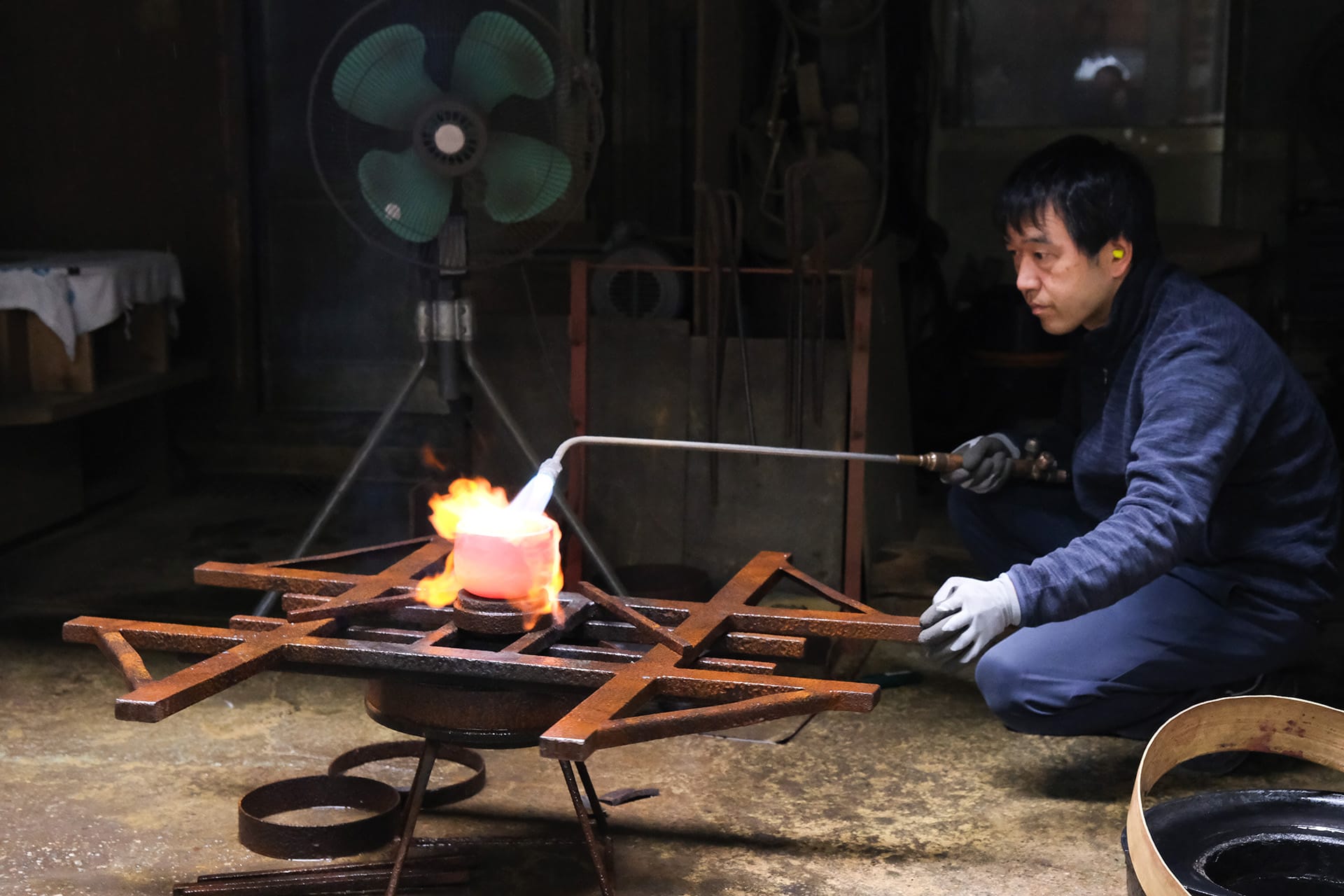
The final part of the process is the sound tuning, which Shimatani mastered after seven years. He doesn’t tune according to musical notes (do, re, mi, fa, et cetera) but by feeling. The technique is a family secret but it essentially consists of ringing the bell with a special hammer, remembering the sound and then hitting it again somewhere else. If Shimatani feels that the sound has improved, then he tries another part and listens. If he feels this is not good, he hits the inside and outside of the same spot until he’s satisfied. From time to time an orin can fall out of tune and they’re brought back for adjusting. He tests me by striking two bells, one before and the other after tuning, and asks me to identify which is which. I get it wrong. He offers me a second chance together with a hint: “The purpose of orin is for praying, so the sound should make the mind more calm. The tuned one has a more rounded sound and lasts longer”.
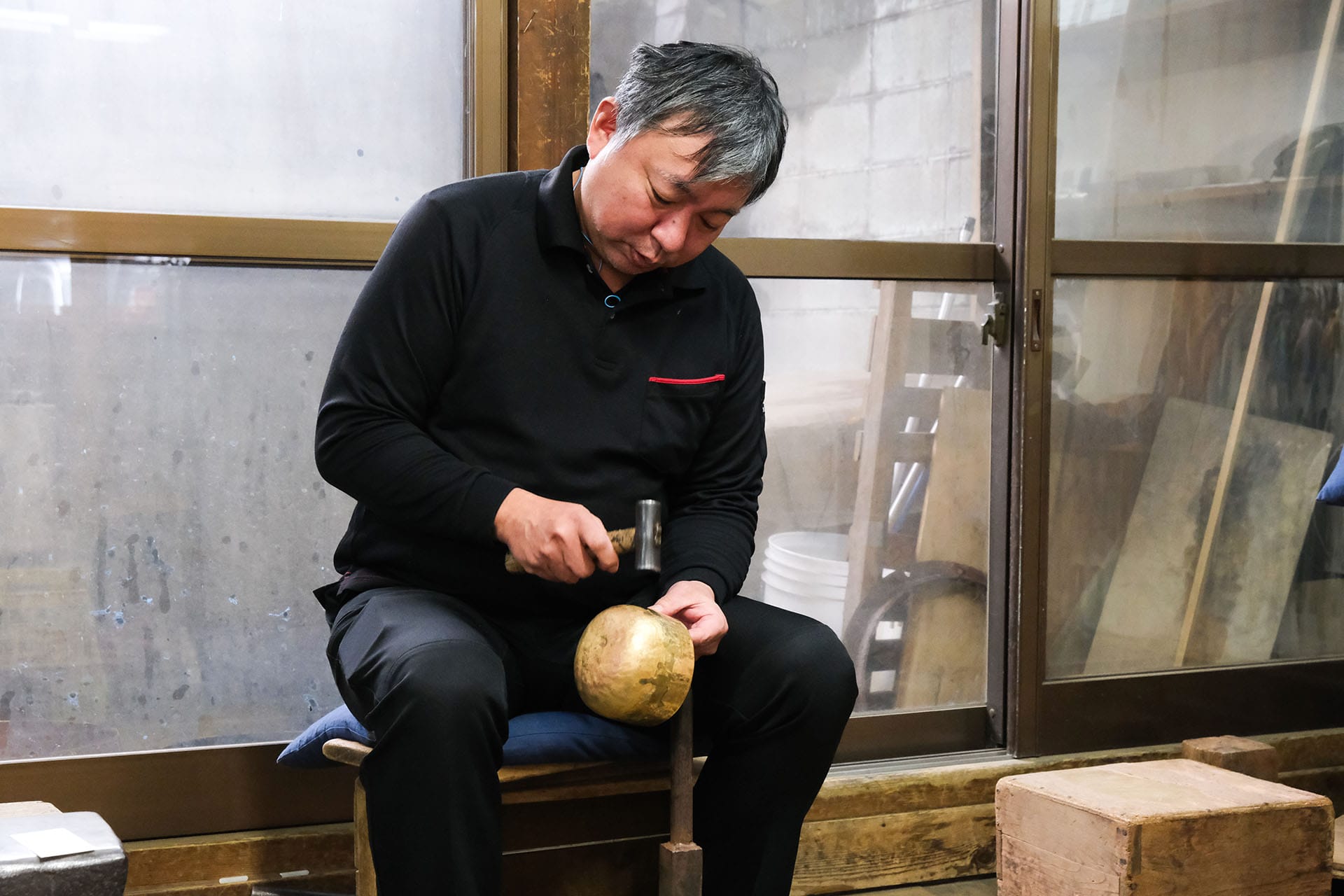
An orin can remain in use for several decades, even up to a hundred years if taken care of. The country is going through a sharp decline in population and the demand from Buddhist temples is dwindling. Young people in the big cities are renouncing the use of the Butsudan. So who’s buying them today? Shimatani tells me that in Japan, people associate the sound of an orin with Buddhist ceremonies. Abroad that notion is not so rooted and thus customers are getting them for yoga and mindfulness, or just because they like the sound of it. “My orin studio is the largest in Japan by market share. But because the demand of orin has been declining, it’s difficult to maintain the craft alive by just doing that.”
This urged a search for other applications of their core skill, which is making objects by hammering metal. It took years of experimenting with different materials to come up with a new product, supported by the collaborative effort of a group of shokunin from Takaoka who every year come up with new ideas to better serve society’s needs and show them at an exhibition in Tokyo. In 2013, Shimatani released 'Suzugami', sheets of pure tin that have been hammered into thin squares. These can be folded like an origami and used for serving food or to hold accessories, and easily rolled back to its original flat shape for storage. The texture on each piece has poetic names like ‘Arare’, “ice hails from the sky with rustle left behind traces of their fierceness”, or ‘Kazahana’, “snowflakes dancing in cloudless sunny day left behind this ephemeral layer”.
Suzugami has been very popular since its launch and has allowed the Shimatani Shoryu Studio to stay active. The constant banging I heard throughout my visit was indeed due to the making of Suzugami to keep up with the demand. It’s been a smart solution to preserve the hammering skill but I wonder what will happen to the tuning techniques?
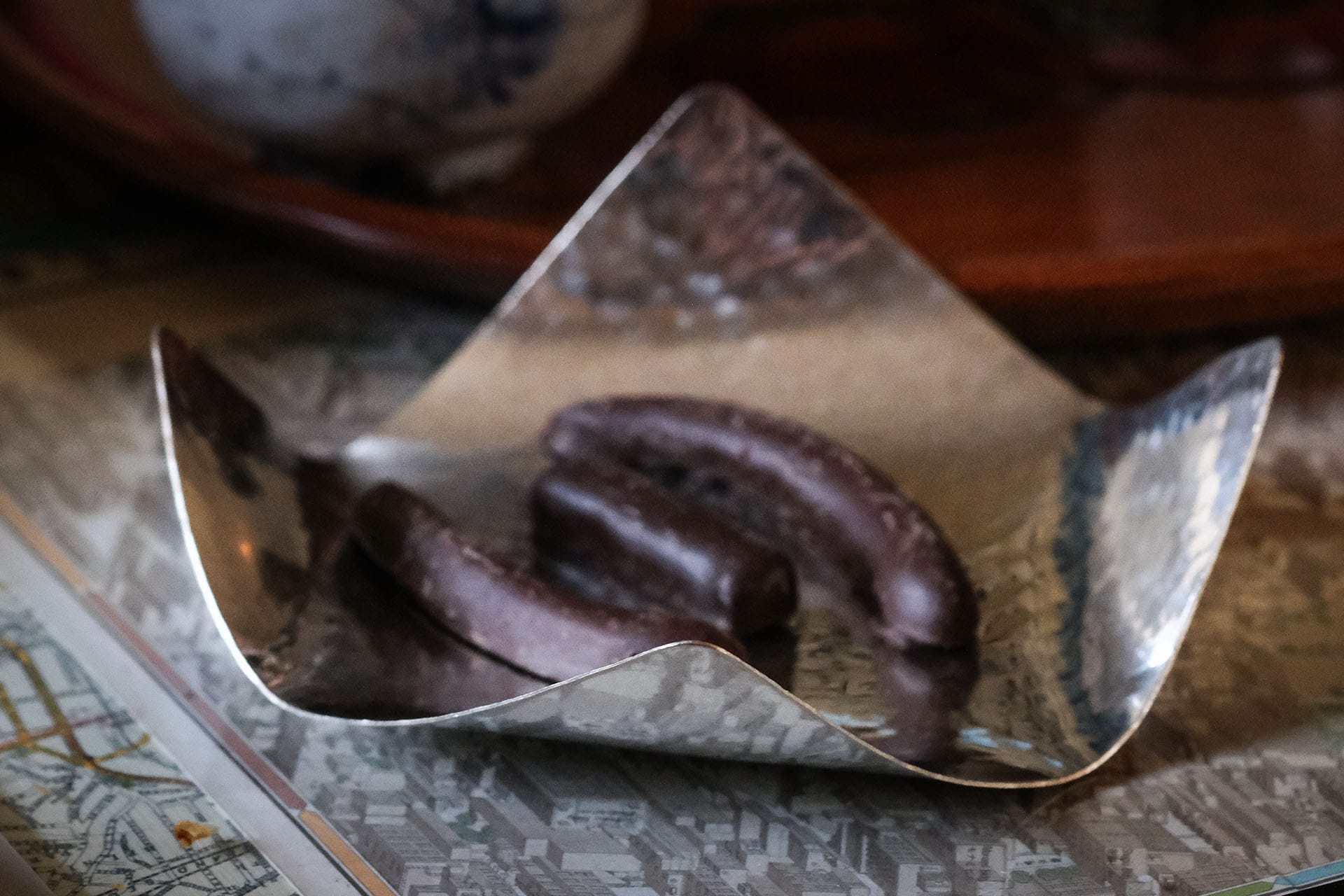
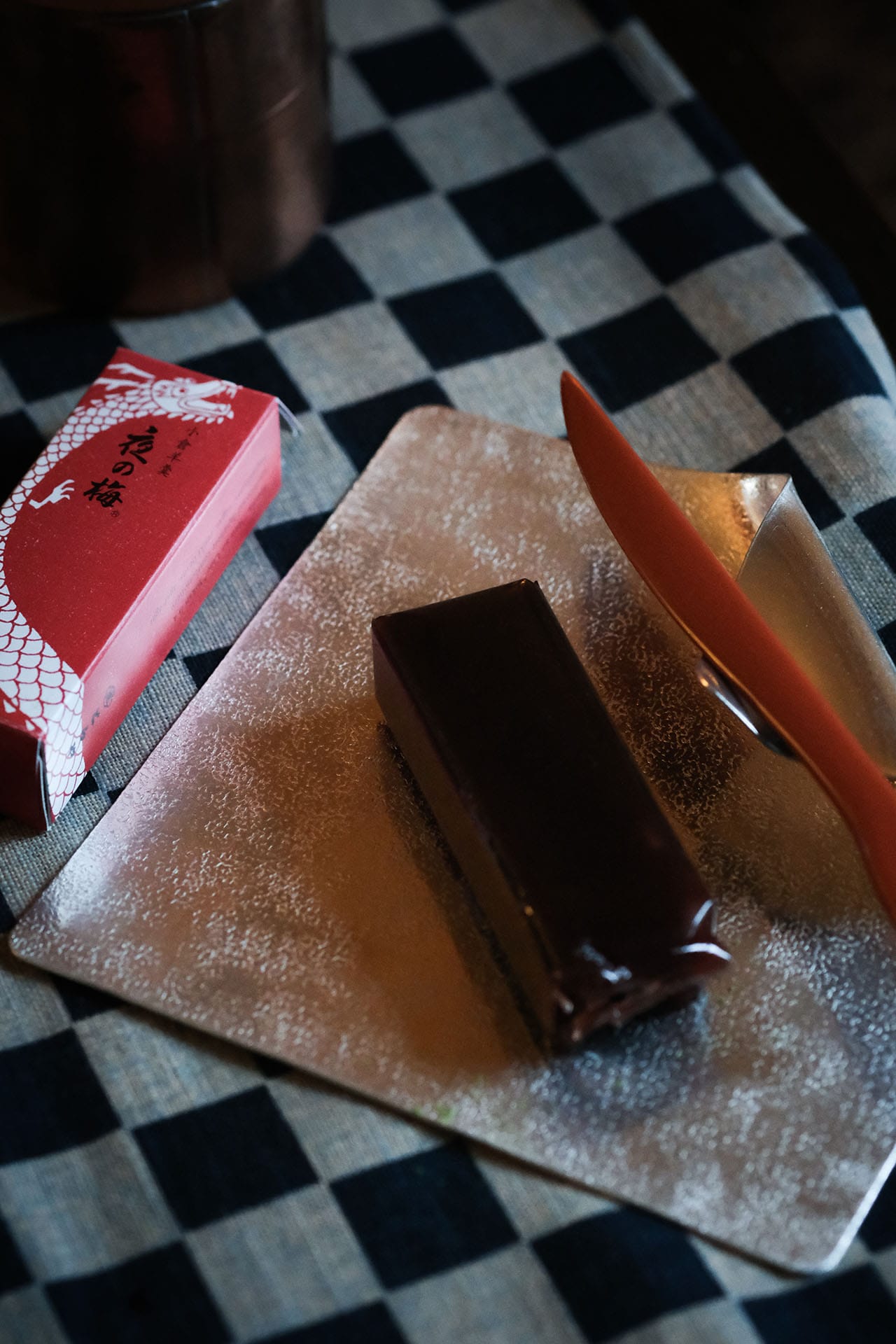
I use Suzugami at home to serve sweets to accompany tea
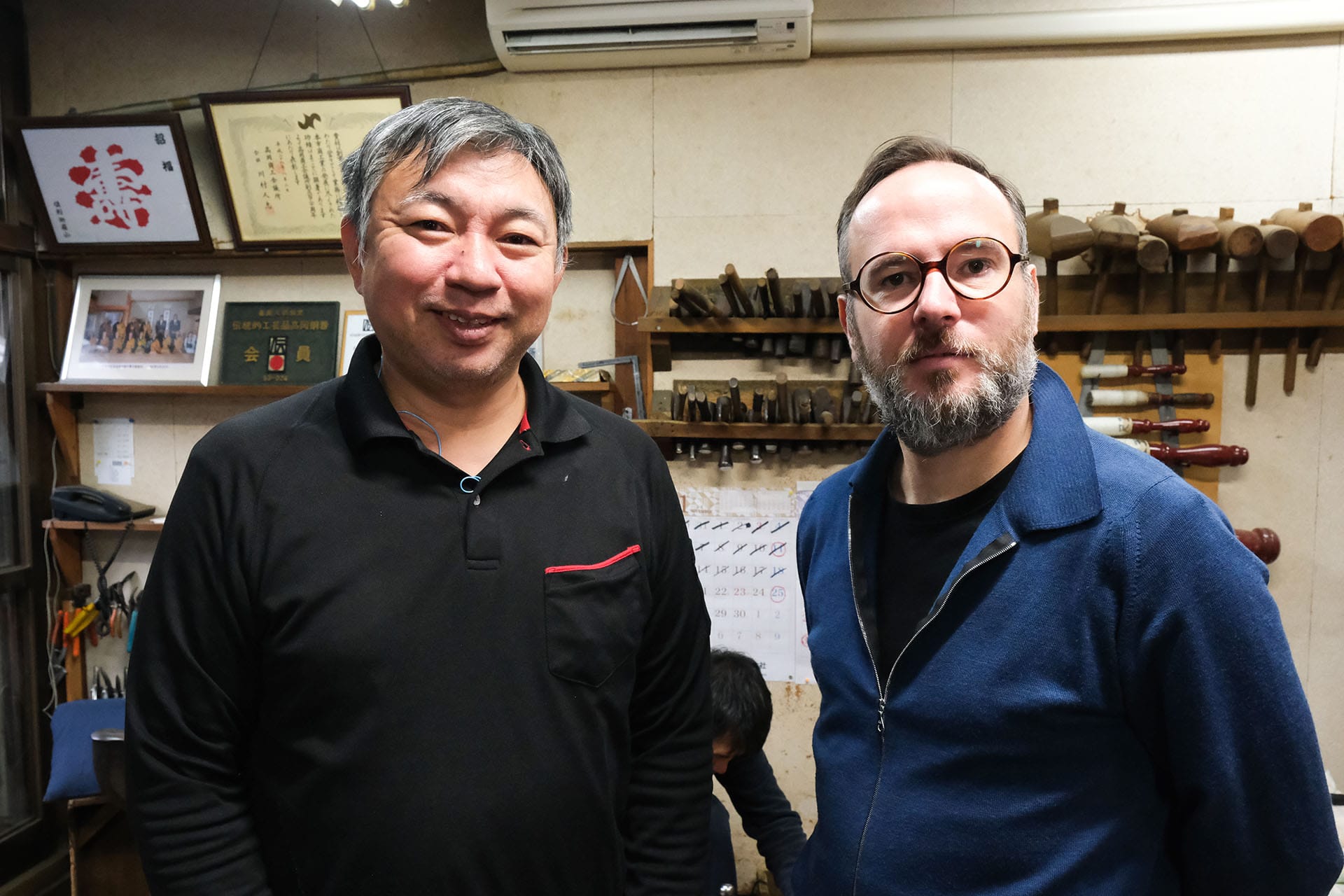
In the next issue I’ll share the story of another orin maker who has taken a different approach to keep their craft alive and relevant in the 21st century.
All photos by Gianfranco Chicco except where noted.
つづく



